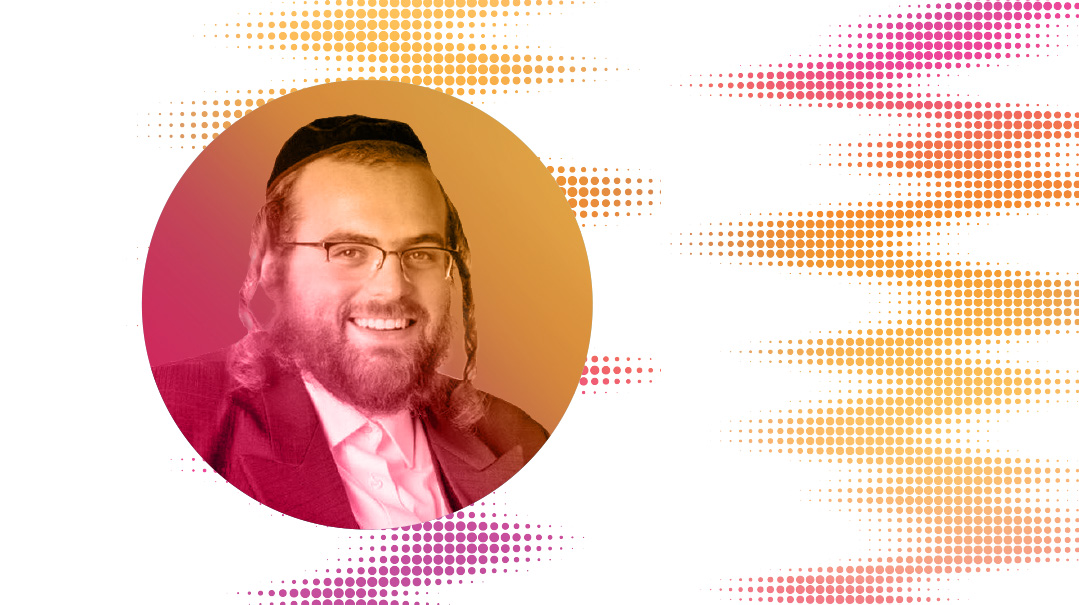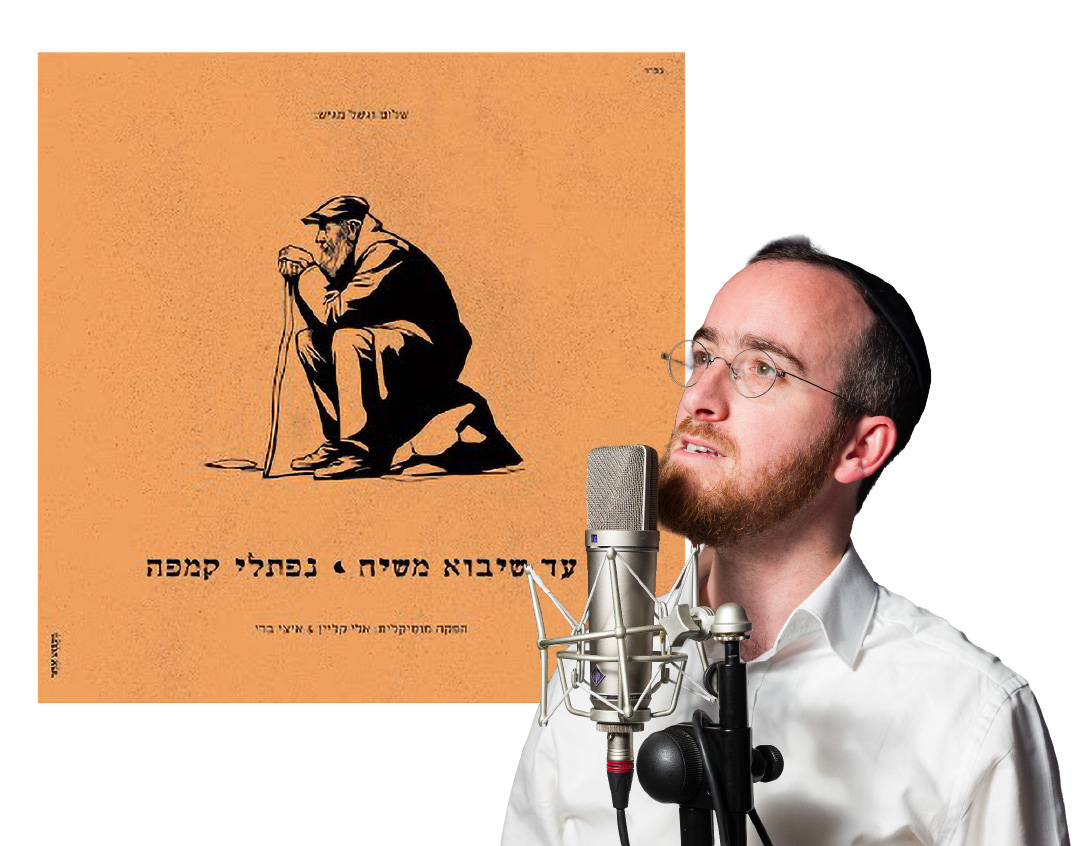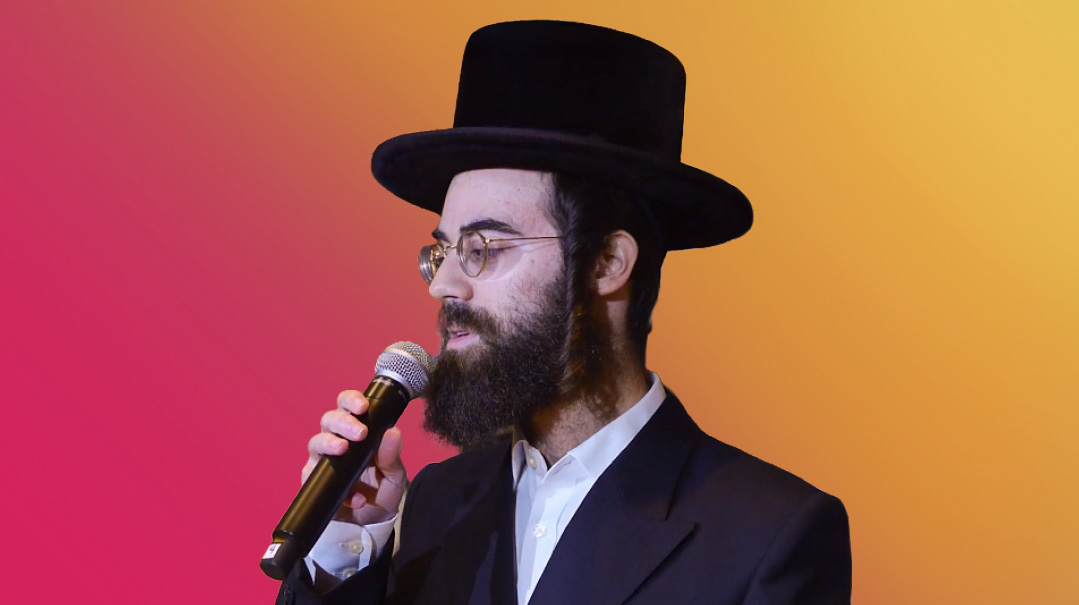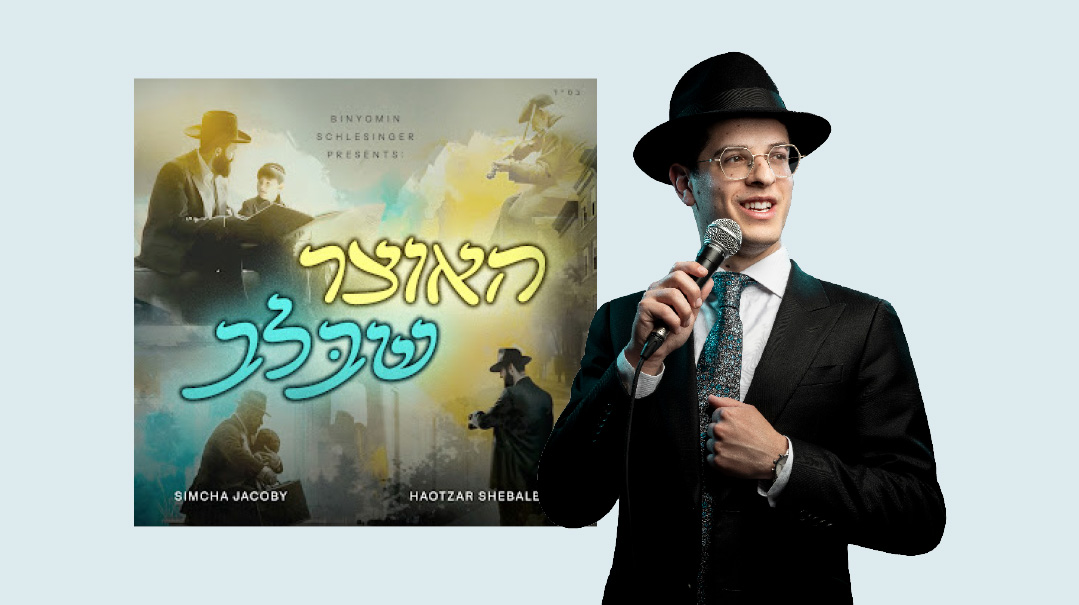Mood Mix with Rabbi Moshe Blaustein
| July 23, 2024He's still creating incredible summer memories for thousands of boys and girls

You might know him as the famous voice of Shloompy Shapiro from the Marvelous Middos Machine and Borosov from Abie Rotenberg and Rabbi Shmuel Klein’s The Golden Crown. But in real life, RABBI MOSHE BLAUSTEIN is a talented third-grade rebbi at Eitz Chaim Toronto, and the longtime and beloved director of Camp Agudah Toronto. Even through his own personal challenges — he lost an adult special-needs son and recently faced a daunting illness — he’s still creating incredible summer memories for thousands of boys and girls in separate camp seasons
A SONG THAT TAKES ME BACK TO MY EARLY CAMPING DAYS
It was either 1968 or 1969 when Bentzion Shenker came to Camp Agudah in New York for a color war breakout. He broke it out by teaching the camp a new song, “Zekeinim im ne’arim, yehallelu es sheim Hashem…” from the third Hallelukah, and the two teams were, of course, Zekeinim and Ne’arim. That was “wow” – people who were there as kids still remember it. Then there was a certain Yiddish song that head counselor Simcha Kaufman used to sing when he woke the camp. It became a real Agudah classic.
THE FIRST SONG WE PLAY AFTER TISHAH B’AV
We blast the song of whichever singer is coming to give a concert in camp that night, to get the kids pumped for the concert.
THE CAMP’S FAVORITE SHABBOS ZEMIROS
We generally go for the ones that start off slow, then pick up a faster tempo and become dance-able. Tzur Mishelo fits the bill on Friday night. We start off seated, and then it morphs into singing and dancing. I’m makpid that everyone is included, so we get up and dance around all the tables. We have our zemiros booklets, but if there is a heatwave, or if I don’t think the singing is going well, I’ll decide to cut it short.
Sometimes I stop everyone in the middle of zemiros and tell over a great story. For example, in the middle of Eishes Chayil, there’s a beautiful story I share from Rabbi Paysach Krohn. At Shalosh Seudos, I like to tell a nice maaseh with a strong take-away. As we say in camp, “You’ve gone through Shabbos, but has Shabbos gone through you?” The singing and stories are a big part of achieving that Shabbos feeling inside everyone.
A NEVER-FAIL SONG TO WARM UP THE CROWD FOR A KUMZITZ
Yo Aisenstark’s “Tov Lehodos.” Yo was a division head at our camp, and he brought the song with him. It took root here and became a favorite. Everybody here also knew it was the favorite song of my dear son Menachem a”h, who spent some time here in the summers when he wasn’t at Camp HASC. We also love Shlomo Zolty’s classic “Vehaviosim” — and he was also an Aguda Toronto guy.
MY GO-TO SONG ABOUT MASHIACH
We go back and forth between two old “Ani Maamin” tunes, singing them for a long time at Shalosh Seudos. One is the classic Pirchei tune, and the other is from JEP. And as everybody is singing, I speak about Mashiach really coming. Yes, it can happen right now. It’s a goosebumps kind of feeling.
A SONG I DON’T WANT TO HEAR IN CAMP
There are some songs I really don’t like, but they might be beautiful for another person, so I try not to exclude them from camp (unless, or course, they are outright inappropriate).
AN INSTRUMENT I WISH I PLAYED
As a third-grade rebbi, I know the power of music and song very well. In fact, my Master’s thesis is about the effectiveness of using a niggun when learning Chumash. I would love to play acoustic guitar, which can function without electricity. I’ll always remember how at our son’s bar mitzvah, in an ice storm and power outage, Abie Rotenberg came in with his guitar to play, creating amazing atmosphere and warmth.
A SONG I NEVER GET BORED OF
Abie’s “ …” I had a student and camper, Boaz Zeifman, who sang this at a camp reunion before he suddenly passed away, and this song always brings him back.
HOW TO CALM DOWN OVER-EXCITED CAMPERS
The main thing that helps is physically sitting down. If things are getting out of control, I look at the counsellors and motion with my hands, and I sit down myself, so the kids get the point. Then we switch to a slow song.
HOW WE CREATE THE RUACH FOR THE NINE DAYS
We sing “Al Naharos Bavel” before bentshing, instead of Shir Hamaalos, and we sing the last paragraph, Yiru es Hashem, with a slow tempo.
THE MUSIC OF MY PAST
My father was a Gerrer chassid, so the Yankel Talmud material and the Gerrer marches take me back to him.
MUSIC THAT HELPS ME UNWIND
Almost anything by Baruch Levine. Did I mention that Baruch is, of course, a Camp Agudah Toronto alumnus? He got a good start to his singing career here. He was always one of the picks because he had such a good voice that everyone wanted him on their team.
A JEWISH MUSIC ARTIST I MOST CONNECT TO
Abie Rotenberg, Rabbi Shmiel Klein, and Shloime Goldreich, with whom I worked on the Marvelous Middos Machine.
A SONG THAT REMINDS ME OF CAMP WHENEVER I HEAR IT
“Veyei’asu chulam agudah echas…” will always take me to Camp Agudah Toronto (it became an anthem because of the word agudah). And so will the other alma mater regulars.
THE BEST COLOR WAR SONG I REMEMBER
It was the last year that Armo Kuessous was at Agudah Toronto, and he’s been at Romimu for the past 30 years. He decided to try something new, an alma mater with a fast, pulsing beat, instead of something slow, so we used MBD’s “Yidden, Yidden, Kumpt Aheim” and it was a huge success — “Agudah, Agudah, you’re the one…”
SOME UNFORGETTABLE ENGLISH LYRICS
“Where else in this world can you find a wall, whenever you touch it, it touches you…” From Abie’s “Yerushalayim” on Journeys 3. The lyrics were written by Chaya Sara Fogel.
AN ALBUM I’D TAKE ON A LONG ROAD TRIP
Any Journeys album would do it for me.
(Originally featured in Mishpacha, Issue 1021)
Oops! We could not locate your form.







